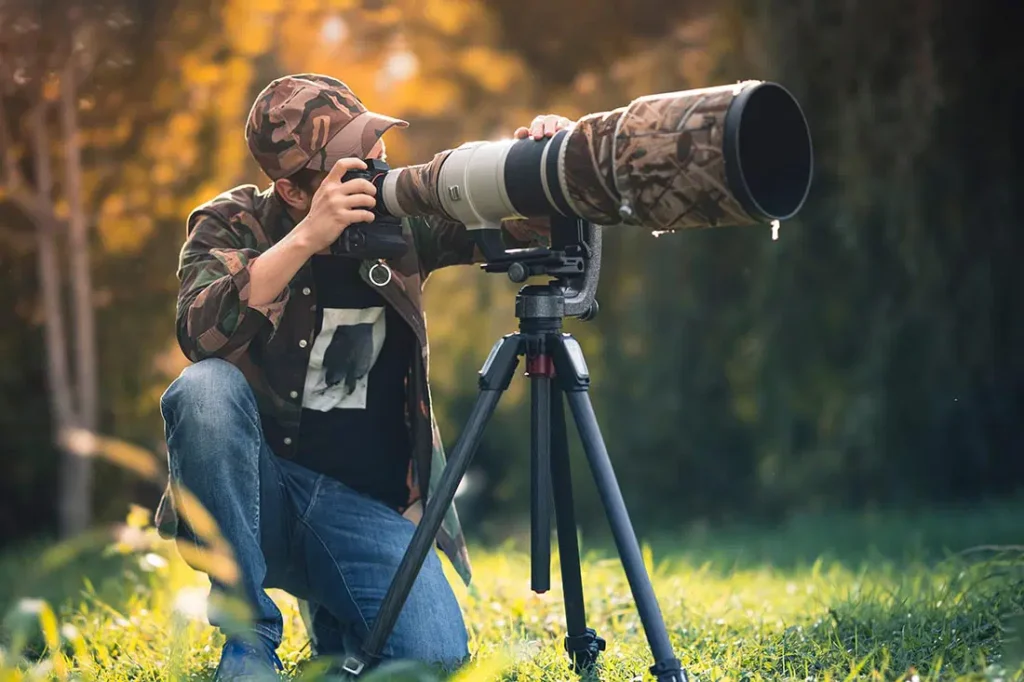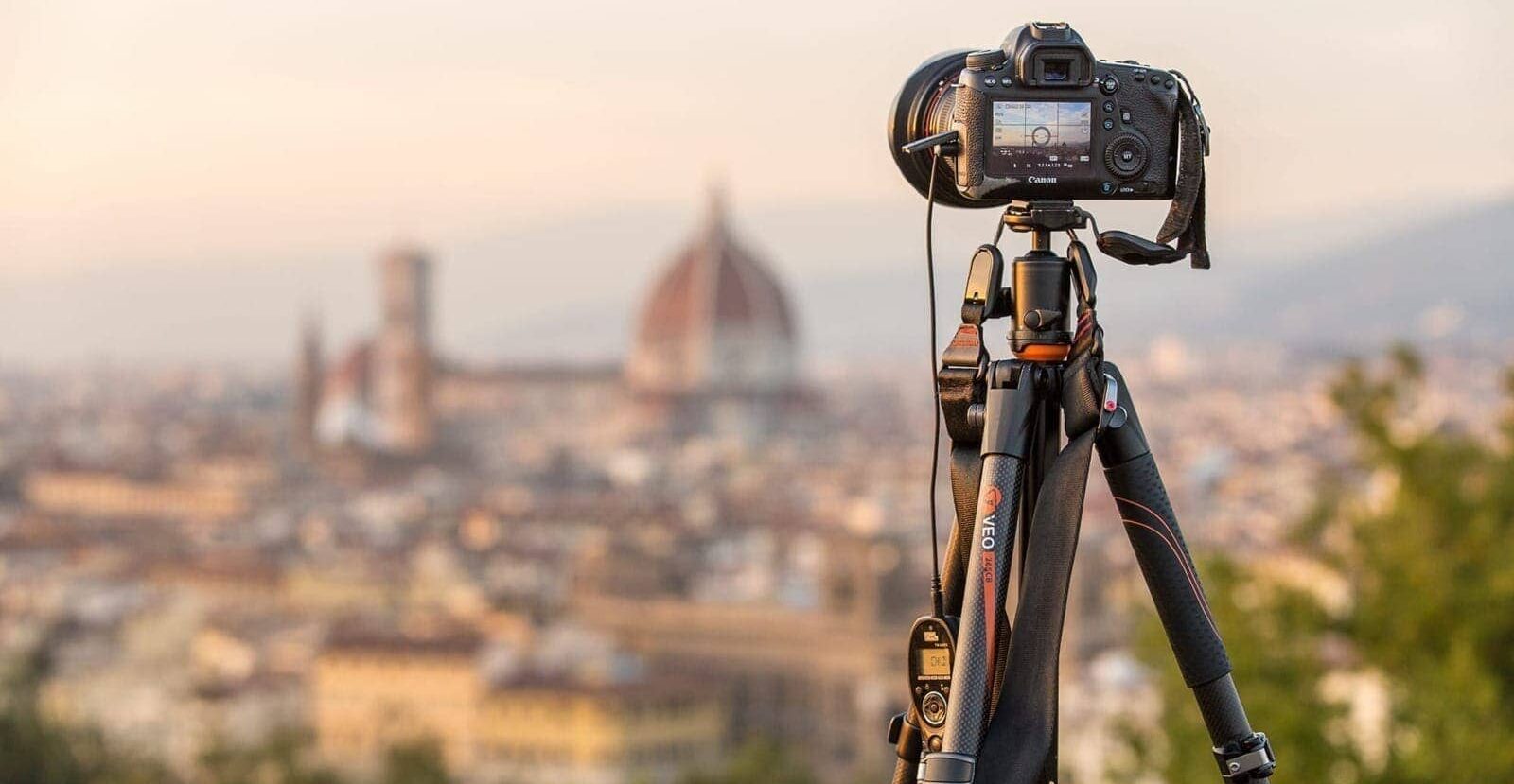Introduction
Selecting the ideal camera tripod can be a transformative step for your photography. While often overlooked, a high-quality tripod plays a pivotal role in achieving sharpness, stability, and creative freedom in your images. Whether you’re capturing serene landscapes, dynamic sports shots, or intricate macro details, the right tripod empowers you to elevate your craft. Let’s explore the significance of choosing the correct tripod and how to navigate the many options available.
Why Choosing the Right Camera Tripod Matters for Your Photography

A suitable tripod isn’t just about supporting your camera; it’s about unlocking your potential as a photographer. By ensuring stability, a tripod allows for longer exposures, smoother panning, and more accurate compositions. Imagine photographing a stunning night sky or capturing a cascading waterfall without worrying about shaky hands. The right tripod provides the assurance that every detail will be crisp, every line precise. It’s a cornerstone for those who wish to experiment with techniques such as time-lapse, HDR photography, or panoramas.
Understanding the Basics of Camera Tripod
What Is a Camera Tripod and Why Do You Need One?
At its core, a camera tripod is a three-legged support system designed to keep your camera steady. It’s an essential tool for reducing camera shake, especially in low-light conditions or with longer focal lengths. The tripod allows you to achieve shots that would be impossible handheld, such as intricate close-ups or sweeping landscapes. For photographers who desire control over every aspect of their image, a tripod becomes indispensable.
Key Parts of a Camera Tripod: Legs, Head, and Feet Explained
A tripod is composed of three main elements: the legs, the head, and the feet. The legs, which can be made from various materials like aluminum or carbon fiber, provide the main support. They often have adjustable sections for altering the height and angle. The head, which attaches to the top of the legs, holds the camera and allows for different types of movement—such as panning and tilting. The feet anchor the tripod to the ground and can be equipped with rubber grips or metal spikes, depending on the terrain. Understanding these parts helps you assess how each feature influences stability, ease of use, and adaptability.
Different Types of Camera Tripod: Which One Is Right for You?
Camera tripods come in several varieties, each designed for specific needs. There are lightweight travel tripods that are compact for on-the-go photography, sturdy studio tripods that offer unmatched stability, and versatile all-rounders suited for most situations. Additionally, there are monopods, which provide some stability while being more portable than traditional tripods, and tabletop tripods for shooting in confined spaces or from lower angles. The key is to match the tripod type to your primary shooting requirements.
Assessing Your Photography Needs
What Type of Photography Do You Shoot? Consider Your Style
The kind of photography you engage in significantly affects the tripod you should choose. Landscape photographers may need a robust model capable of withstanding wind and uneven terrain, while portrait photographers might prefer a model that facilitates easy height adjustments. Wildlife photographers, on the other hand, might prioritize a lightweight tripod for quick setup during spontaneous moments. Identifying your style is the first step in narrowing down the options.
How Often and Where Will You Use Your Camera Tripod?
Frequency and location matter when selecting a tripod. If you frequently shoot outdoors or travel, you’ll need a tripod that’s not only durable but also easy to carry. Consider the environments you typically find yourself in—rocky landscapes, urban streets, or studio settings. A tripod that works well indoors may struggle on rough terrain, and vice versa. The more adaptable your choice, the more versatile your photography will become.
Evaluating the Weight and Portability Factor
Portability often comes at the expense of stability, and vice versa. A heavy-duty tripod provides stability for long-exposure shots but can be cumbersome for photographers who move around a lot. Conversely, ultra-light travel tripods are easier to carry but may not offer the same steadiness in windy conditions. Striking a balance between weight and portability ensures that you get the best of both worlds.
Exploring Camera Tripod Material Options
Aluminum vs. Carbon Fiber: What’s the Difference?
The choice between aluminum and carbon fiber is a common dilemma for photographers. Aluminum tripods are typically more affordable and offer excellent durability. However, they tend to be heavier than their carbon fiber counterparts. Carbon fiber tripods, while more expensive, provide superior strength-to-weight ratios and are better at dampening vibrations. Your choice will largely depend on your budget and how much weight you’re willing to carry.
Weighing the Pros and Cons of Each Material Type
Aluminum tripods excel in affordability and ruggedness, making them suitable for those on a tighter budget. Yet, they can become uncomfortable to carry over long distances. Carbon fiber, though pricier, is a favorite among professionals who value lightweight gear and often work in remote locations. Consider whether the extra cost justifies the convenience and performance improvements for your particular use case.
How Material Impacts Stability and Durability
Material choice not only affects weight but also influences the tripod’s durability and vibration absorption. Carbon fiber tripods, with their rigid structure, better absorb minor vibrations, which can be crucial during long-exposure shots. Aluminum tripods, while not as vibration-resistant, offer exceptional longevity and can withstand rougher handling. Choosing the right material ensures your tripod can endure the elements while maintaining image quality.
Choosing the Right Camera Tripod Head
Ball Head vs. Pan-Tilt Head: Which Is Best for You?
The tripod head is where the camera meets the support, and different heads offer distinct benefits. A ball head allows for quick adjustments in any direction, making it ideal for photographers who need to move swiftly from one composition to another. A pan-tilt head, on the other hand, offers separate controls for horizontal and vertical movements, providing greater precision for studio work or architectural photography. Each type has its place, depending on your shooting style and requirements.
Understanding Fluid Heads for Videographers
For videographers, smooth motion is essential, and this is where fluid heads shine. They are designed to allow controlled movements when panning or tilting, resulting in seamless video footage. The fluid dampening system helps in achieving gradual starts and stops, which can make a significant difference in the quality of video captures. If you dabble in both photography and videography, a fluid head might be a worthwhile investment.
Quick-Release Systems: Why They Matter
A quick-release system enables you to detach your camera from the tripod quickly and easily. This feature is invaluable in fast-paced shooting environments where you need to switch from tripod-mounted to handheld shots in seconds. Additionally, quick-release plates often come with safety mechanisms to prevent accidental disconnection, providing peace of mind during demanding shoots.
Considering Leg Locks and Adjustments
Twist Lock or Flip Lock? Deciding What Works Best for You
Leg locks come in two primary forms: twist locks and flip locks. Twist locks are sleek and allow for smooth extension and retraction of the tripod legs. Flip locks, while sometimes bulkier, offer a quicker setup and are generally easier to operate with gloves. Each has its own set of advantages, and personal preference plays a significant role in choosing between them.
Exploring Multi-Angle Leg Adjustments for Versatility
Tripods with multi-angle leg adjustments enable you to position the legs at various angles, which is helpful when shooting on uneven terrain or seeking low-angle perspectives. This flexibility ensures that your tripod remains stable on challenging surfaces, giving you the confidence to shoot from virtually any position.
Finding the Perfect Camera Tripod Height
How to Choose a Camera Tripod That Matches Your Eye Level
An ideal tripod height allows you to position the camera at your eye level without extending the center column too much, which can reduce stability. A tripod that reaches or slightly exceeds your height when fully extended is often recommended, as it minimizes the need to crouch and ensures more comfortable shooting for extended periods.
Should You Consider a Tripod with a Center Column?
A center column can be useful for quickly adjusting height, but it can also compromise stability when extended. Some tripods offer reversible or removable center columns, which add versatility for low-angle shots. The choice largely depends on your typical shooting scenarios and whether you prioritize height flexibility over the utmost steadiness.
Weight Capacity and Load Considerations
Understanding Maximum Load Capacity for Your Gear
The maximum load capacity of a tripod indicates how much weight it can support. It’s advisable to choose a tripod that can handle at least 1.5 times the weight of your heaviest camera and lens combination. This ensures that the tripod remains stable and minimizes any risk of tipping over.
Why You Should Avoid Overloading Your Tripod
Exceeding the tripod’s load capacity can lead to instability and potential damage to both your equipment and the tripod itself. Always check the specifications and consider the weight of accessories such as external flashes or telephoto lenses when calculating the total load. A tripod that struggles under the weight of your gear may compromise the sharpness of your shots.
Portability and Travel Friendliness
Choosing a Travel-Friendly Tripod for Your Adventures
For those who frequently travel, portability is a key factor. Look for tripods that fold down to a compact size and weigh less than three pounds for easier transport. Some models even come with carrying cases that can be attached to backpacks. Travel tripods often feature a blend of lightweight materials and clever folding designs to maximize portability without sacrificing functionality.
How to Pack Your Tripod for Easy Carrying
When packing your tripod, consider using a padded case to protect it from scratches and damage. Many photographers

